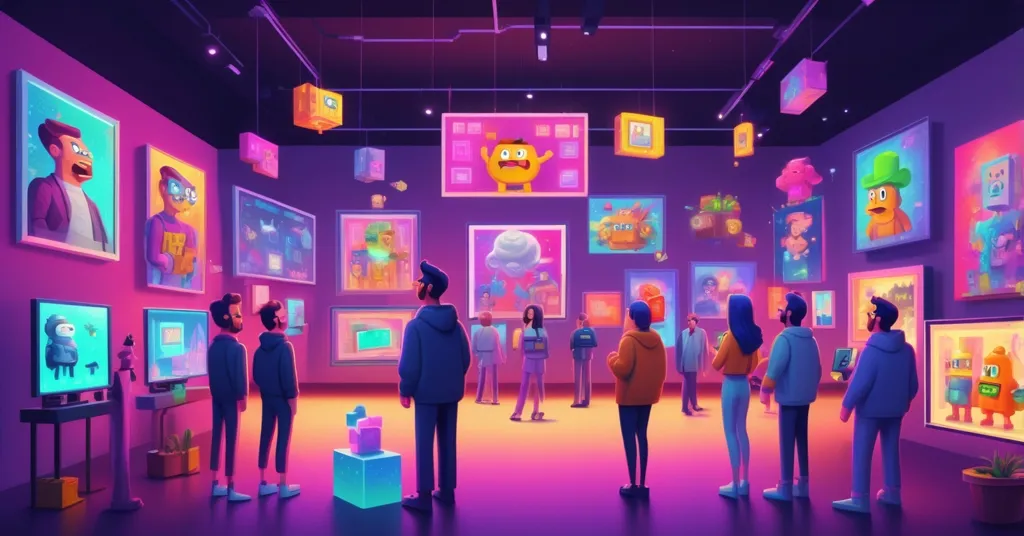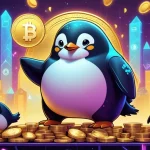NFT Market Cap Hits $6.6B in July 2025: CryptoPunks Spark Revival or Hype?

NFT Market Cap Soars to $6.6B in July 2025: Are CryptoPunks Leading a Revival?
The NFT market has roared back to life in July 2025, with market capitalization skyrocketing 94% to $6.6 billion and a jaw-dropping $5.15 million sale of a CryptoPunk signaling a potential renaissance. After a brutal downturn earlier this year, are non-fungible tokens finally staging a sustainable comeback, or is this just another hype-fueled mirage?
- Market Explosion: NFT market cap jumps 94% to $6.6B, with weekly trading volumes up 51% to $136M.
- Blue-Chip Dominance: CryptoPunks and Pudgy Penguins surge, highlighted by a $5.15M Punk sale.
- Driving Forces: Telegram’s NFT push and regulatory clarity fuel renewed investor interest.
Market Surge: Unpacking the Numbers Behind the Hype
Let’s cut to the chase: the NFT market is on fire again. According to DappRadar, July 2025 saw the sector’s market cap blast to $6.6 billion, a staggering 94% increase month-over-month, while weekly trading volumes spiked 51% to $136 million—the highest since early 2025. Even more telling, the average NFT price soared 40% in just a week to $146, though sales volume only ticked up by 7%. What does this mean? Buyers are pivoting hard toward high-value assets, ditching the cheap, speculative trash that once clogged the market. Compared to the soul-crushing second quarter of 2025, where trading volumes plummeted 80% to a measly $823 million from a high of $4 billion the previous year, this feels like a damn resurrection. For the latest data, check out the detailed report on NFT market cap and trading volumes.
For those new to the game, NFTs—or non-fungible tokens—are unique digital assets recorded on a blockchain, often representing art, collectibles, or virtual land. Unlike Bitcoin or other cryptocurrencies, which are interchangeable, each NFT is one-of-a-kind, its ownership and authenticity verified on-chain. They became the poster child of Web3 hype in 2021-2022, with sales like Beeple’s $69 million artwork at Christie’s making headlines, only to crash spectacularly as scams, overhype, and market saturation turned excitement into cynicism. So, with this latest surge, are we seeing NFTs 2.0, or just another FOMO-driven fever dream? For a deeper dive into their history, take a look at this comprehensive overview of NFT trends.
Blue-Chip Titans: CryptoPunks and Pudgy Penguins Steal the Show
Leading this revival are the heavyweights of the NFT world, the so-called blue-chip collections that scream Web3 clout. CryptoPunks, a pioneering project from 2017 on Ethereum, saw its floor price—the lowest listing price for an item in the collection—rocket 53%. A standout sale of Punk #5577, nicknamed the “Cowboy Ape,” fetched $5.15 million to GameSquare Holdings, a galactic leap from its original claim price of $454, though still shy of its 2022 peak of $7.7 million. $5.15 million for a pixelated cowboy ape? Either we’re in a new art renaissance, or someone’s got money to burn. Community reactions to such high-value CryptoPunk sales are buzzing with both awe and skepticism.
“They’re still the gold standard of Web3 clout… owning a Punk is about more than profit—it’s status, pure and simple.” – Sara Gherghelas, DappRadar Analyst
Meanwhile, Pudgy Penguins, the cuddly underdog, has waddled past giants, overtaking Bored Ape Yacht Club in market cap with a mind-blowing 539% floor price rise since mint and a 7% weekly gain. Briefly, they even led CryptoPunks in seven-day trading volume with over $20 million before settling into second place. Their push into physical plush toys in Asia shows how NFT projects can bridge digital hype with real-world value. Bored Apes, not to be outdone, are planning Telegram sticker packs to keep their cultural relevance alive. These collections dominate for a reason: in a volatile market, their scarcity and cultural cachet make them safer bets for investors seeking status over pure speculation. For more on their recent surge, see this analysis of Pudgy Penguins’ market cap growth.
Category-wise, profile picture (PFP) NFTs like these titans account for 37% of trading volume, doubling down on their role as digital avatars in Web3 communities. Real-world asset NFTs, linking tokens to physical or financial assets, follow at 11%, while gaming NFTs—once hyped as the metaverse’s future—have cooled off. Sports, music, and fashion NFTs trail behind, suggesting the market is focusing on proven niches rather than untested gimmicks.
Platform Power: Telegram Rewrites the Accessibility Game
One of the biggest sparks for this resurgence comes from an unlikely corner: Telegram, the messaging giant with over 900 million users. The platform has dived headfirst into NFT trading on its TON blockchain, a layer-1 chain built for speed and scalability, making digital collectibles accessible without the clunky wallets or tech headaches that scare off newbies. A Snoop Dogg NFT collection sold out in 30 minutes, raking in $12 million, while Telegram’s NFT Gifts market hit a $200 million cap with $8 million in daily trading volume. Founder Pavel Durov has teased upcoming blockchain minting and secondary market features, which could further democratize NFT ownership. Projects like Doodles are also eyeing Telegram for sticker collections, hinting at a trend of social platforms becoming Web3 hubs. Learn more about Telegram’s impact on NFT trading through recent announcements.
Why does this matter? Telegram’s integration slashes barriers. Unlike Ethereum, where high gas fees can make trading a small-value NFT cost more than the asset itself, TON offers cheap, fast transactions tailored for micro-purchases. This could onboard millions of casual users, but there’s a flip side: does mass accessibility guarantee lasting value, or just inflate the next bubble with low-quality junk? For insights into why Telegram resonates in the crypto space, explore this discussion on its role in NFT adoption.
Revamped Platforms: Can Art Blocks and Moonbirds Keep the Momentum?
Beyond the big dogs, other projects and platforms are clawing their way back with impressive turnarounds. Moonbirds, once written off as a has-been, saw trading volume explode 600% and its floor price climb 60% after a partnership with Towns and an acquisition by Orange Cap Games. Art Blocks, a hub for generative art NFTs where algorithms create unique pieces, reported a 156% jump in average sale prices after rolling out collector-friendly features. These comebacks show a market rewarding innovation and bold pivots, but let’s not get too cozy—NFT history is littered with projects that spike hard and then fade into obscurity. Sustaining this momentum will depend on delivering real utility and riding broader market waves.
Regulatory Tailwinds: A Legal Lifeline for NFTs?
Another major boost comes from the regulatory front, where clarity is finally cutting through years of fog. SEC Commissioner Hester Peirce recently confirmed that many NFTs don’t qualify as securities, easing fears of federal overreach. However, she’s crystal clear that tokenized securities tied to NFTs—digital assets representing ownership in regulated financial products—remain under scrutiny and must comply with federal laws. Meanwhile, the Ninth Circuit Court of Appeals ruled that NFTs can be trademarked under the Lanham Act, giving creators and projects legal protections akin to physical goods. For specifics on these rulings, refer to Hester Peirce’s statement on NFT securities.
This is huge. For years, uncertainty kept institutional players—think banks or major art houses—on the sidelines, worried about lawsuits or crackdowns. Peirce’s stance, paired with the SEC’s openness to modernizing rules for blockchain tech, could lure big money into the space. But risks linger: differing global regulations, like stricter EU policies on digital assets, and ongoing scrutiny of tokenized products could still trip up growth. Legal confidence is a tailwind, not a guarantee. Stay updated with the latest on regulatory impacts on NFT growth.
Risks and Red Flags: Don’t Get Burned in the Hype
Before we start chanting “NFTs are back,” let’s take a hard look at the dark side. The 97% collapse in NFT lending markets earlier this year is a grim reminder of how fragile this space can be. Cultural triggers, like a 400% spike in CryptoBatz NFTs after Ozzy Osbourne’s death, reveal how speculative and event-driven this market remains. That’s not maturity—it’s a damn circus. Then there’s the ever-present stench of scams: wash trading, where fake sales inflate prices, and rug pulls, where developers vanish with investor funds (remember Evolved Apes in 2021?), are still rampant. The shift to high-value assets is promising, but one bad headline or broader crypto downturn could send this $6.6 billion cap tumbling back to earth.
Historically, NFTs have followed vicious boom-bust cycles. The 2021-2022 peak saw unimaginable highs, only to crater as hype outpaced utility. Gaming and metaverse NFTs, once darling sectors, have fizzled due to poor user experiences and broken promises—think clunky virtual worlds no one actually uses. Could they rebound with better tech? Maybe, but don’t hold your breath. As champions of decentralization, we love seeing NFTs embody digital ownership and creative freedom, but we’re not blind to the greed and bullshit that can turn this revival into a graveyard for the gullible.
Bitcoin’s Lens: Stability vs. NFT Chaos
From a Bitcoin maximalist perspective, it’s worth noting the stark contrast between BTC’s role as sound money—built on stability and scarcity—and the wild west of NFTs, often tied to Ethereum’s ecosystem. Bitcoin doesn’t swing on celeb deaths or pixel art fads; it’s a bedrock for financial sovereignty. Yet, NFTs push blockchain’s creative boundaries in ways Bitcoin shouldn’t, and perhaps doesn’t need to. They fill a niche of cultural expression and speculative investment, driving Web3 adoption even if they’re a rollercoaster. We can root for both: Bitcoin as the foundation, NFTs as the chaotic frontier.
Key Questions on the NFT Market Surge of 2025
- Is the 2025 NFT market boom sustainable or just another bubble?
The 94% jump to $6.6 billion and focus on high-value assets like CryptoPunks hint at a maturing space, but history’s boom-bust cycles warn of potential crashes fueled by speculation over substance.
- How is Telegram reshaping NFT adoption for mainstream users?
With 900 million users, Telegram’s seamless trading on the TON blockchain—hitting a $200 million NFT Gifts market cap—slashes barriers like complex wallets, but risks flooding the market with low-value hype.
- What does regulatory clarity mean for NFT growth?
SEC statements that most NFTs aren’t securities and court rulings on trademark protections boost confidence, potentially drawing institutional money, though global policy differences and tokenized asset scrutiny remain risks.
- Why are blue-chip NFTs like CryptoPunks and Pudgy Penguins leading this revival?
Their scarcity, cultural status, and track record as “safe havens” attract investors seeking stability and prestige in a shaky market, with sales like a $5.15 million Punk proving their pull.
- Can platforms like Art Blocks and Moonbirds sustain their comeback?
Spikes like Moonbirds’ 600% trading volume gain show promise, but long-term success depends on delivering utility and weathering the NFT market’s notorious fickleness.
- What risks should NFT investors watch for in this surge?
Despite the hype, wash trading, rug pulls, and event-driven spikes (like celeb deaths pumping prices) are rampant, reminding us that greed can derail this comeback into another disaster.
NFTs might be the poster child of Web3’s chaotic genius, but if we’re building a decentralized future, let’s make damn sure it’s not on quicksand. The numbers scream revival, with blue-chip collections, platform innovations, and legal clarity paving the way. Yet, the ghosts of past crashes and ever-looming scams whisper caution. This saga is far from over, and we’re here to dissect every twist with unfiltered honesty, rooting for disruption while keeping the hype in check. The blockchain frontier still has gold to mine—just watch out for the bandits.



